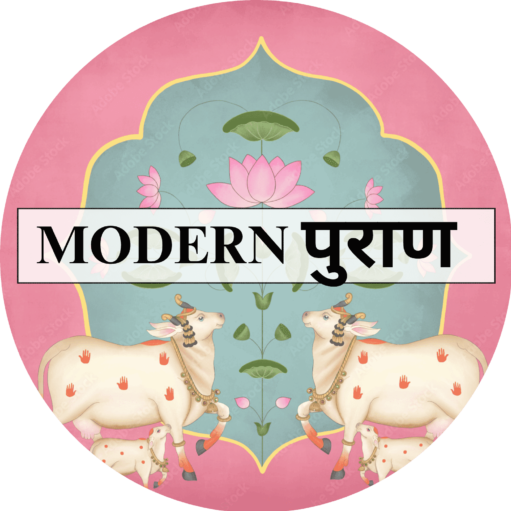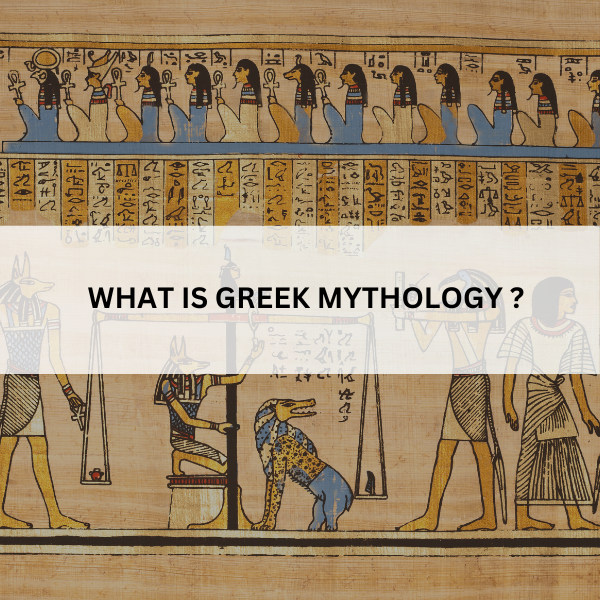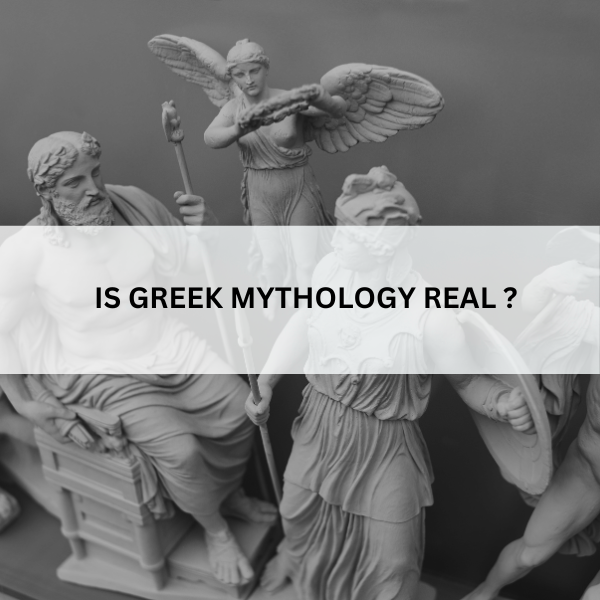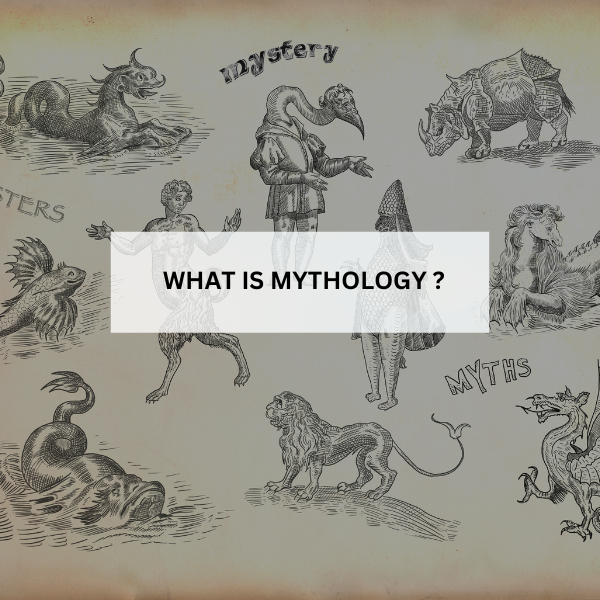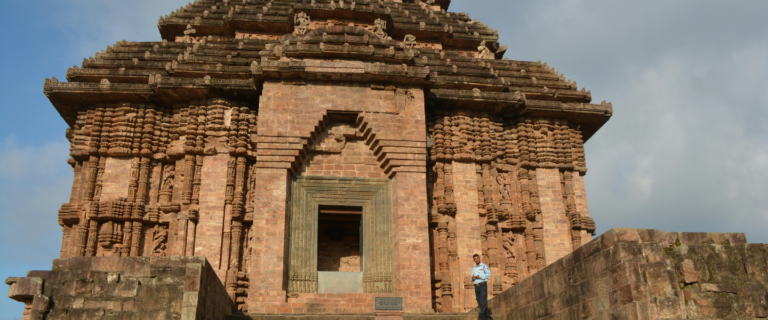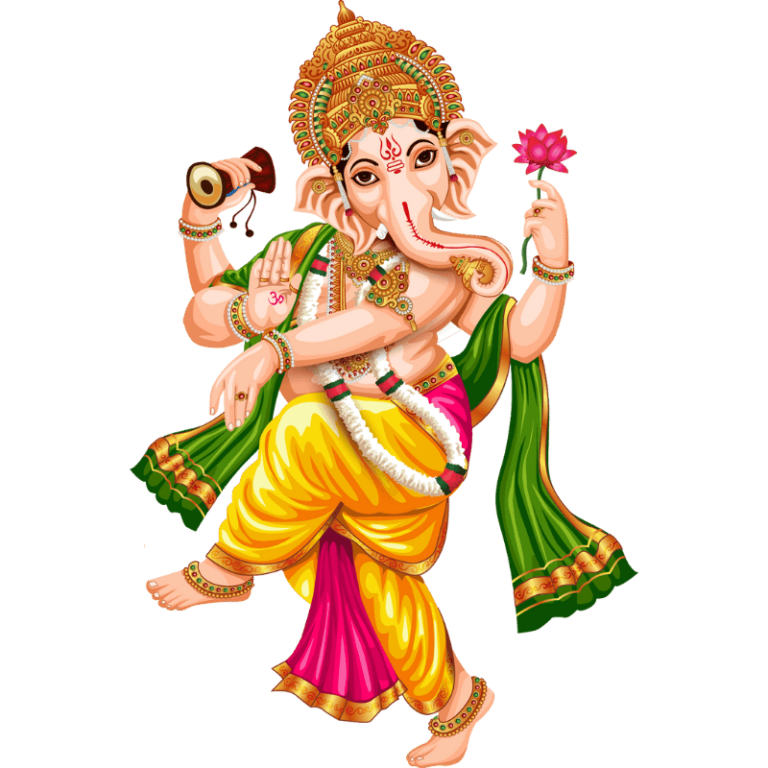Mohenjo-daro reveals the ancient Indus Valley Civilization
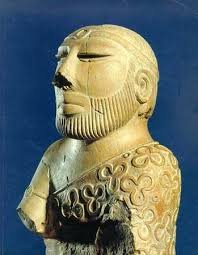
Mohenjo-daro reveals the ancient Indus Valley Civilization The archaeological site of Mohenjo-daro holds World Heritage status from UNESCO and represents one of the most important historical discoveries ever made by humans. The ancient city of Mohenjo-daro situated in present-day Sindh, Pakistan reveals critical information about the sophisticated urban planning and governance system of the Indus Valley Civilization which peaked around 2500 BCE. UPSC aspirants need to study Mohenjo-daro’s history, culture, and society because it appears regularly in both Prelims and Mains exams. Historical Significance R.D. Banerji discovered Mohenjo-daro in 1922 when it stood as one of the major cities of the Indus Valley Civilization together with Harappa, Lothal, Dholavira and Kalibangan. The term “Mohenjo-daro” means “Mound of the Dead” which reflects the ancient ruins’ significant historical layers. Experts consider Mohenjo-daro to have been an active metropolis that demonstrated advanced expertise in multiple areas of daily existence. Urban Planning and Architecture The city of Mohenjo-daro stands out due to its sophisticated system of urban planning. The city planners established a structured grid pattern where streets ran in straight lines intersecting at perpendicular angles. Key architectural highlights include: The Great Bath: The Great Bath was a rectangular water tank constructed from watertight bricks which served as a ritual bathing facility. The structure demonstrates how their society valued purity rituals and cleanliness practices. Granary: The existence of expansive storage facilities indicates that this society managed grain storage and distribution through a centralized system. Drainage System: The city demonstrates advanced engineering skills through its complex drainage system which consists of covered drains and soak pits designed to improve hygiene. Residential Buildings: The construction of houses from baked bricks included multiple rooms and features like wells and courtyards to emphasize comfort and private living spaces. Society and Economy The site of Mohenjo-daro reveals its inhabitants lived in a society that maintained organization and equality among its members. Without any grand palaces or massive temples present, the society appears to have been relatively classless. The economic system depended mostly on agricultural activities but also benefited from trade and commercial endeavors. The existence of seals, beads, and pottery demonstrates that there were trading connections between Mohenjo-daro and Mesopotamia along with other distant regions. Art and Culture The objects unearthed at Mohenjo-daro demonstrate a wealthy cultural legacy. Some key findings include: Seals: These seals which feature animal designs and writing characters were probably employed to facilitate trade and manage administrative tasks. Dancing Girl Statue: The bronze Dancing Girl Statue of a young woman captured in an impressive pose reveals the artistic mastery of the Indus Valley civilization. Terracotta Figurines: These terracotta figurines which depict animals as well as humans and deities reveal details about their religious practices and everyday activities. Decline of Mohenjo-daro Historians continue to debate various theories about why the Indus Valley Civilization and Mohenjo-daro experienced decline. Various theories about Mohenjo-daro’s decline include climate change and river pattern shifts alongside invasions by external groups. The historical impact of Mohenjo-daro persists in shaping modern interpretations of ancient societies even after its decline. Relevance for UPSC Preparation The topic of Mohenjo-daro stands as a required subject for UPSC candidates studying History and Culture in their syllabus. Here are some tips for effective preparation: Focus on Key Features: Investigate the urban planning systems and architectural designs of Mohenjo-daro along with its artifacts to gain comprehensive knowledge. Questions often revolve around these aspects. Comparative Analysis: Analyzing Mohenjo-daro alongside Harappa Dholavira and Lothal reveals regional differences within the Indus Valley Civilization. Interdisciplinary Approach: The findings from Mohenjo-daro should be connected to geographical themes about climate conditions as well as sociological insights into societal structure and economic analyses of trade practices. Practice Previous Year Questions: Examine the nature of UPSC exam questions on the Indus Valley Civilization from past years. Conclusion The ancient city of Mohenjo-daro demonstrates the creative and robust nature of the Indus Valley Civilization. UPSC candidates who study Mohenjo-daro learn about India’s historical wealth while gaining skills to answer complex interdisciplinary questions. Studying Mohenjo-daro provides civil services examination candidates with fundamental knowledge to master ancient history through comprehensive learning. Table of Contents HOT READS Art and Architecture of Indus Valley Civilization (Harappan Civilization) – Duplicate – [#2145] Art and Architecture of Indus Valley Civilization (Harappan Civilization) Art and Architecture of Indus Valley Civilization (Harappan Civilization) Free Ancient History Notes for UPSC Indian History -Free UPSC notes Shri Ganesh Chalisa Shri Hanuman Baan Shri Hanuman Chalisa Theological Demons in Hindu Mythology KUMBH MELA PLACE | KUMBH MELA 2025 DATE Prayagraj Mahakumbh 2025 Live: Akhara seat allotments Female Naga Sadhus: Facts About Warriors of Maha Kumbh Mela 2025 Top 10 Must-Visit Ghats at Kumbh 2025 Can Vampires Truly Exist? – Exploring the Myth and Reality The Divine Grace of Tapati: Daughter of the Sun God Zimbabwe vs Afghanistan Live Score, 2nd ODI: ZIM Opt To Field First; Follow Live Scorecard And Commentary From Harare Astrology and Mythology are related ? Divine Court of Bastar Trials at Bhangaram Devi Temple Trial And Punishment of Deity Muchukunda Gufa Legends of Dwarka Krishna And Mahabharata MAGICAL DWARKA Lord Krishna’s City-Dwarka TALE OF DURGA & SHUMBHA ! Tale of Devi Mahatmya and Chanda-Munda Who is Chand Mund ? SEAL AND SHIVA OF INDUS VALLEY CIVILIZATION God Of Harappa Civilization Indus Valley Civilization and Goddess Who Is Devi ? Who is Vishnu and Garuda? God Of Love – KamaDev BEST HISTORICAL WALK IN DELHI Kissa Shiva Ka In Mahabharata
Art and Architecture of Indus Valley Civilization (Harappan Civilization)
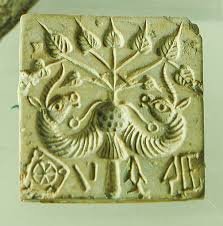
Art and Architecture of Indus Valley Civilization (Harappan Civilization) From 2600 BCE until 1900 BCE the Indus Valley Civilization existed in the northwestern areas of the Indian subcontinent. The urban planning and architectural achievements of the Harappan Civilisation stand as one of the most remarkable accomplishments from ancient times. The urban design of their cities demonstrated advanced sophistication since their planning exceeded the standards of their time period. Harappa town pc: google img Features of Town Planning of Harappan Civilization Architecture of the Harappan Civilization developed independently from external influences. The architectural designs of their civilization emphasized practical functionality instead of aesthetic appeal. Most structures were spacious houses and large-scale public buildings instead of grand palaces or monuments and tombs. In the Harappan civilization the urban planning of Harappa and Mohenjo-Daro distinguished these towns from others. Here are the essential features of their urban design: Rectangular grid pattern: The cities in the Indus Valley Civilization followed a grid pattern design which included north-south and east-west streets that established a systematic layout. The city was divided into rectangular blocks because streets and lanes intersected at almost right angles. Narrow lanes extended between the primary street. The common entry point for houses was along the narrow lanes instead of the main thoroughfares. The society of the Harappan Civilisation demonstrated advanced measurement knowledge. Planned streets and alleyways: In IVC cities the streets and alleys were constructed through precise planning they provided sufficient width for carts and pedestrians while some streets featured covered drains along their sides. The main street measured ten metres in width while dividing the town into rectangular and square blocks. pc: google img Fortification: Fortified mud brick walls surrounded cities which protected against robbers, cattle raiders and floods. Division of cities: City division created two distinct areas which consisted of an elevated citadel with a separate lower city section. Citadel Upper part: Significant structures in these ancient cities were built on an elevated citadel located in their western part. The structures found here consisted of granaries along with administrative buildings and pillared halls as well as courtyards. Essential residential buildings designed for use by either the general public or selected residents were located within the citadel. The cities of Harappa, Mohenjodaro, and Kalibangan had citadels constructed on tall mud-brick podiums. Lower part: The lower town with its brick houses where common people lived was situated below the citadel in each city. Material used: Throughout Harappan Civilisation the use of burnt bricks dominated construction projects while stone buildings did not appear. pc: google img Standardized brick size: Builders constructed the houses from mud bricks but used burnt bricks to build the drainages. The Harappan Civilisation built their cities with bricks that followed a standardised size ratio of 1: 2: 4 for thickness:width:length throughout all IVC structures. The uniform brick measurements reveal advanced planning and expert craftsmanship in construction.Bricks used for building houses and city walls shared identical average sizes. Residential areas: Urban areas in the cities were organized into separate residential zones. The construction of multistory houses built from baked bricks demonstrated the advanced development of urban society. Most houses were constructed around central courtyards with some featuring their own wells as well as bathrooms designed for ventilation. Street-facing windows were absent from the buildings while the bathroom walls had tile installations. The Great Bath: The Great Bath exists inside a courtyard space. Stairs lead to upper levels from both northern and southern sides while corridors extend along each of the four sides. Steps ascend to the ground level at both ends. It was well-paved with several adjacent rooms. There were side rooms for changing clothes. The builders installed the bricks to be water-tight and used gypsum mortar for the job. Burnt bricks constructed the floor of the bath. The Great Bath serves a ritual bath purpose which remains essential for religious ceremonies across India. A large well in the neighboring room supplied water to this room while an outlet from the bath’s corner directed flow toward a drain. Example: Great Bath of Mohenjo-Daro. Sophisticated drainage systems: The Harappan Civilisation featured a complex drainage system which had been meticulously planned. Drainage systems connected every house directly to the street drainage system. The construction of drains used mortar combined with lime and gypsum. The street side drainage system included covered drains built at regular intervals and access for maintenance through removable manhole bricks or stone slabs. The drainage infrastructure shows that the Harappa people possessed advanced knowledge of sanitation science. Granary of Harappan Civilization Granaries and storage facilities: Cities maintained systematically organized granaries and storage facilities for agricultural storage. The storerooms had thick walls to safeguard the preserved food from pests and they stood close to the citadel or city centre in Harappa. The Granaries brick construction measured 45 meters across both north-south and east-west dimensions. It was partly paved with baked bricks. The rooms all include three sleeper walls which have air spaces between them. A small triangular opening existed which likely functioned as an air duct channeling fresh air beneath the hollow-floor surfaces. Cities having granaries: Mohenjo-Daro, Harappa, Kalibangan. Water management: The Harappans successfully managed their water resources. Numerous cities contained durable wells, reservoirs, and water tanks that were purposefully located to maintain a reliable water supply for inhabitants. Examples: Water management systems included the Reservoir at Dholavira and Dholavira storm drain alongside the wells at Mohenjo-Daro. Commercial areas: Cities had designated commercial areas which served as centers for artisans and craftsmen to perform their trade together with merchants. Specialised workshops and shops existed in these areas which demonstrated an organised economic system. Historic breadmaker shops have been discovered at Chanhudaro and Lothal. Dockyard: At Lothal stands the massive dockyard which represents the greatest maritime architectural achievement from the IVC period. Researchers found the dockyard at Lothal on the banks of the Sabarmati River. The architectural design reveals comprehensive research into tidal patterns, hydraulic principles and seawater’s impact on brick materials. Among the ancient cities of the Indus Valley
Art and Architecture of Indus Valley Civilization (Harappan Civilization)
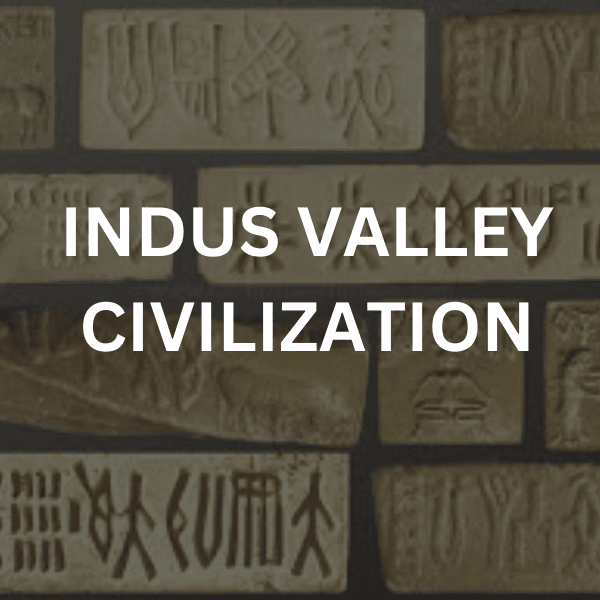
Art and Architecture of Indus Valley Civilization (Harappan Civilization) Indus Valley/Harappan civilization was the first urban civilization in South Asia existing with Mesopotamia and Egypt. The Harappan civilization was located in the largest area (around 8,00,000 sq km) out of the three civilizations. It was the art and architecture of the ancient history of India that the Harappan civilization made noteworthy contributions to the most. Nature of the Art and Architecture of the Indus Valley Civilisation Arts: During the Indus Valley civilisation, the artists showed great artistic inspiration and imagination as they included the anatomical details in which the peculiar arts were amazing. Their drawings of human and animal figures were very lifelike and, especially in terracotta art, the modeling of animal figures was very skilful. Architecture: The architecture of the Indus Valley Civilization was very interesting. The architecture of the time, was not only practical but was not made for beauty or decoration, nor was it designed for them. The development of the architecture of civilization comes into play with the lack of external influences. It has been affected by the local cultures that were present in the areas before the first farming and pastoralist settlements started. Architecture of Harappan Civilization The Harappan culture was distinguished by its system of town planning on the lines of the grid system – that is, streets and lanes cutting across one another almost at right angles, thus dividing the city into several rectangular blocks. The Pattern of Houses: Many of the cities of the Indus Valley civilization were divided into two or more parts: the citadel and the lower town. It is believed that the citadel was a fortified settlement and comprised of some chief structures, such as the great bath and the warehouse, while the lower town consisted of houses and workshops. Only 6 citadels have been found, showing that only priests or higher classes used to live there. The pattern of streets and roads: Indus Valley streets and roads were straight and cutting each other at a right angle. The roads were built using burnt bricks. Drainage system: The drainage system of Indus Valley civilization connected all houses to the street drains, which were covered by stone slabs or bricks. Houses with single, double, and more rooms attached with a very good drainage system were found in many of the sites of the Indus Valley. Burial sites: At burials in Harappan sites, the dead were generally laid in pits. Some graves contain pottery and ornaments, indicating a belief that these could be used in the afterlife. Jewellery has been found in burials of both men and women. In the excavations at the cemetery in Harappa in the mid-1980s, an ornament consisting of three shell rings, a jasper (a kind of semi-precious stone) bead and hundreds of microbeads was found near the skull of a male. Architecture Feature Great Bath at Mohenjo Daro The Great Bath was an incredibly large rectangle tank , located in a courtyard that was enclosed on all four sides by a passageway. There were two sets of stairs, on the north and south quadrants, which lead into the tank, and the tank was made waterproof by placing bricks all around the perimeter and using gypsum mortar. Great Granary The place called Mohenjo Daro is where one of the largest granary sites in the Indus Valley was found. Fortunate, most excavations represent the granary system or a warehouse. Almost all staple food such as rice, wheat, and barley had been stored at these places. Dockyard at Lothal Lothal was a port city of the Harappans. It covers the low deltaic zone at the Saurashtra peninsula. They supposed in times past the sea was closer to the site. This place might have been an offshoot of the main trade with contemporary West Asian societies. A dockyard has been revealed in Lothal by the researchers. Arts and Artifacts of the Indus Valley Civilization During the second half of the third millennium BCE, the arts of the Indus Valley Civilisation emerged. Sculptures, seals, pottery, gold jewellery, terracotta figures, and other forms of art have been discovered at various sites throughout the civilisation. Arts Sculpture Feature Stone statues Harappa and Mohenjo Daro are places where 3D stone statues are found at. There have been discovered two male statues made of stone: Red sandstone torso A bearded man’s bust made of steatite. Bronze Casting Using the ‘lost wax’ method, the bronze sculptures were created. Copper animal figures have also been created. Both human, as well as animal figures, were made out of bronze. ‘Dancing Girl’, Buffalo, and Goat. Copper dog and bird of Lothal, as well as the bronze figure of a bull from Kalibangan, are the objects that have been found Copper Tablet/Slabs marked with a human or an animal figure on one side and a text on the other side, or text on both sides have also been excavated. Terracotta figures The terracotta representations of the human form are crude in the Indus Valley. In the Indus Valley, terracotta representations of the human form are very rough. We noted more realistic motifs were found at the Gujarat sites and Kalibangan city. A terracotta mask of a horned deity Besides the mother goddess who was also applied in the terracotta, other important terracotta motifs included the bearded males with coiled hair. Toy carts with wheels, whistles, rattles, birds and animals, gamesmen and discs – these are the toys children have fun playing. More realistic motifs were found in Gujarat sites and Kalibangan. Seals Many examples of seals were located at different places in the Harappan desert around 2500-2000 BC and were made from steatite, a mineral usually occurring in a soft stone type of soapstone. Each object could have totally different prominence and composition.Animal motifs on the seals: The seals had carvings of beautiful figures of animals, such as unicorn bulls, rhinoceros, tigers, elephants, bison, goat, and buffalo. Purpose: The main uses of the seals were: Primarily for business uses. In addition to this, they were also dealt with as a kind of talisman: kept as identity cards in present times Most distinctive
Free Ancient History Notes for UPSC

Free Ancient History Notes for UPSC UPSC Ancient Indian History Notes will introduce to you the cultures and places of the ancient civilization of India through its colorful and rich art, architecture, literature, and religious practices. They tackle the historical links that contribute to a wholesome concept of the historical continuum and the way it is dominant today. Ancient history forms an important part of both Prelims and Mains. Inclusive Ancient History Notes for UPSC can be of great help in reaching the right answer to multiple choice questions and in writing detailed answers in Mains. Ancient History Notes for UPSC on Indus Valley Civilization Indus Valley Civilisation is the earliest known civilisation in the Indian Subcontinent. It is also called the Harappan Civilization which originated from 2500 to 1700 BCE. Of the three oldest civilizations, Indus Valley Civilization being the principal one can be seen most clearly. Indus Valley Civilization – Art and Architecture Harappan Architecture and Town Planning Mahajanapadas Ancient History Notes for UPSC – Buddhism and Jainism Buddhism and Jainism were the two religions that were developed as a response to the Vedic rituals and social norms. They were the religions that taught people to change their character and behave ethically. Moreover, these were the ones that accompanied and inspired art, architecture, and philosophy. Buddhism Spread and Decline of Buddhism in India Buddhist Centres of Learning and Pilgrimage Sites Buddhist Art and Architecture Bhakti Movements in North Indi Bhakti Movements in Other Regions of India Buddhist Art and Architecture Buddhist Literature Jainism Jain Art and Architecture Jain Literature Schools of Indian Philosophy: Orthodox and Heterodox UPSC Ancient History Notes – Southern India Cultural and maritime heritage-rich area in Southern ancient India emerged as a significant political and economic power arena and had experienced reigns of several powerful kingdoms such as the Cholas, Cheras, and Pandyas. These port cities along with the focus on trade and commerce helped in the development of the Chola Empire and other kingdoms in the region which led to the port cities of Mamallapuram and Kaveripattinam becoming vibrant and acting as the centers of cultural exchange with foreign lands. Kingdoms, Administration, Society & Economy of the Sangam Age Gurjara-Pratiharas Bhakti Movements in South India Art, Architecture & Literature of Sangam Age Ashoka Satavahana Era Pallavas of Kanch All About Rashtrakutas Dynast All About Pala Dynasty Imperial Cholas: Art, Architecture and Literature Imperial Cholas Pallavas of Kanchi Ancient History of India – Mauryan Empire The Mauryan Empire, created by Chandragupta Maurya, can be seen as one of the most important periods in the history of India. At Pataliputra, the capital city, the empire was governed as one unit over the broad territory with the rules according to Rabindranath Tagore’s Arthashastra. Mauryan Empire: Part I Post-Mauryan Age: Northern India Post-Mauryan Kingdoms in North-Western India Mauryan Art, Architecture and Literature Administration is the Mauryan Empire Society, Economy & Religion During the Mauryan Era Post-Gupta Era NCERT Books are the pivotal sources for the learning of history. If you’re preparing for the UPSC exam to become an IAS officer, it’s a good idea to study history from these books. It is useful to jot down important points during the study process, as this will help you to recall them easily when the time comes. Nevertheless, the U.P.S.C. candidates may sometimes find it difficult to understand what to focus on; or they might not find the time or the tools to make good notes. To support the aspirants of the UPSC CSE, Modern puran guiding articles are drawn up in the way that each the aspirants should be able to understand them in a comprehensive way. These notes are taught by valuable topics of Ancient Indian History and designed for the easy understanding of subject by the aspirants. These free Study Materials are prepared to cover most of ancient India’s key history topics to the early Middle Ages. For instance, you must of course know the times of the evolution of India First and then you should explore the various aspects of history, i.e. how people lived, how things were organized, and what the role of events was for culture as well as politics. Use these notes together with the NCERT Books to go through each and everything for the UPSC exam. Table of Contents Must Reads Kissa Shiva Ka In Mahabharata November 18, 2024 Blog, god BEST HISTORICAL WALK IN DELHI November 23, 2024 Blog, travel God Of Love – KamaDev November 23, 2024 Blog, god Who is Vishnu and Garuda? November 24, 2024 god, vaahan Who Is Devi ? November 29, 2024 Blog, goddess Indus Valley Civilization and Goddess November 29, 2024 Blog, goddess God Of Harappa Civilization November 29, 2024 Blog SEAL AND SHIVA OF INDUS VALLEY CIVILIZATION November 29, 2024 Blog, god Who is Chand Mund ? November 30, 2024 Blog, demon, goddess Tale of Devi Mahatmya and Chanda-Munda November 30, 2024 Blog, demon, goddess TALE OF DURGA & SHUMBHA ! November 30, 2024 Blog, demon, goddess
Indian History -Free UPSC notes

INDIAN HISTORY CHRONOLOGY Indian History : Indian History is of interest to the masses including foreigners due to the culture and civilisations in this sub-continent. Indian history can be analysed by political, cultural, religious or economic axes. In terms of chronology, Indian History has three periods – Ancient India, Medieval India and Modern India. This happened with proto-humans (Homo erectus) in the Indian subcontinent 20 lakh years (2 million years) ago, and with Homo sapiens since 70,000 BC. But they were gathers/hunters. The earliest inhabitants of Indian subcontinent can be identified as tribal people such as Nagas (North-East), Santhals (East-India), Bhils (Central India), Gonds (Central India), Todas (South India) etc. The majority of them are speakers of Austric, pre-Dravidian languages, including Munda and Gondvi. Dravidians and Aryans were second-generation immigrants to the sub-continent. In ancient India, the terms Paleolithic, Mesolithic, Neolithic and Chalcolithic have different meanings – depending on the kind of stone/metal tools. Paleolithic (2 million BC – 10,000 BC) Fire Equipments constructed from limestone. Ostrich Eggs Significant Paleolithic sites: Bhimbetka (M.P), Hunsgi, Kurnool Caves, Narmada Valley (Hathnora, M.P), Kaladgi Basin. Mesolithic Age (10,000 BC – 8,000 BC) Major Climatic Change happened Domestication ie The domestication of cattle began. Microliths at Brahmagiri (Mysore), Narmada, Vindya, Gujarat. Magadha kingdom – Bimbisara of Haryanka Kula Sisunga dynasty – Kalasoka (Kakavarnin) Nanda empire – Mahapadma-nanda, Dhana-nanda Persian- Greek: Alexander 327 BC Mauryan Empire (321-185 BC) Maharshis of the Mauryan Empire: Chandra Gupta Maurya, Bindusara, Asoka Post-Mauryan Kingdoms (Middle Kingdoms): Sunga (181-71 BC), Kanva (71-27BC), Satavahanas (235-100BC), Indo-Greeks, Parthians (19-45AD), Sakas(90BC-150AD), Kushanas(78AD) South Indian Kingdoms – Chola, Chera, Pandyas (BC 300) Gupta Kingdom (300AD – 800AD): Classical Era Key politician of Gupta Period: Samudra Gupta (Indian Napoleon) Post Guptas or Contemporary Guptas Harshvardana, Vakatakas, Pallavas, Chalukyas. Hunas, Maitrakas, Rajputs, Senas and Chauhans. Medieval India (AD 700 – AD 1857) AD: 800-1200: Three-man battle (Tripartite struggle)– Prathiharas, Palas, and Rashtrakutas Muhammed Bin Kassim’s Attack (AD 712) Rise of Islam and Sufism Mohammed Ghazni (AD 1000-27) Mohammed Ghori (AD 1175-1206) * Kingdoms of South India in Medieval India – Bhamini and Vijayanagara Delhi Sultanate (1206 AD – 1526 AD) During the Delhi Sultanate, the successive dynasties flourished one after another. Slave Dynasty Kilji Dynasty Tuglaq Dynasty Sayyid Dynasty Lodi Dynasty Mughals (AD 1526 – AD 1857) Great Mughals Later Mughals Mughals from Babar (1526) to Aurangazeb (1707), the greater of the three, were Great Mughals. The Mughals who reigned from 1707 to 1857 were Later Mughals. Arrival of Europeans Other Kingdoms of North India – Marathas, Sikhs Modern India (AD 1857 +) First Indian Independence War (1857) Initiation of Indian National Congress (1885) Formation of Muslim League (1906) Non-Co-operation Movement (1920) Civil Disobedience Movement (1930) Quit India Movement (1942) Partition of India (1947) Constitutional History of India (1946 – 1950) Economic Development of India Wars – India-Pak – The creation of Bangladesh; India-China. New Economic Policy of 1991 Nuclear, Space and Defense Development History Schools Orientalists – West Aiding East Culture – Out of action Cambridge School – Downplays ideology Nationalist School – To Congress and Gandhi: Hindu Nationalists for Hindutva version Marxists School – Class conflict Subaltern School – Caste conflict OTHER STUDY MATERIAL Free Mains Study Material Online Free Prelims Study Material Online Free CSAT Study Material Online Free Ethics Study Material Online Free Geography Study Material Online Free Science Study Material Online Free Social security Study Material Online Free Ecology Study Material Online Free Disaster Management Study Material Online Free SSC Study Material Online FREE MYTHOLOGY READ-UPS Art and Architecture of Indus Valley Civilization (Harappan Civilization) January 19, 2025 Study Material Free Ancient History Notes for UPSC January 19, 2025 Study Material Indian History -Free UPSC notes January 18, 2025 Blog Shri Ganesh Chalisa January 16, 2025 god Shri Hanuman Baan January 16, 2025 god Shri Hanuman Chalisa January 16, 2025 god Theological Demons in Hindu Mythology January 15, 2025 demon KUMBH MELA PLACE | KUMBH MELA 2025 DATE January 14, 2025 NEWS UPDATES, travel Prayagraj Mahakumbh 2025 Live: Akhara seat allotments January 14, 2025 NEWS UPDATES Female Naga Sadhus: Facts About Warriors of Maha Kumbh Mela 2025 January 11, 2025 travel Top 10 Must-Visit Ghats at Kumbh 2025 January 11, 2025 travel Can Vampires Truly Exist? – Exploring the Myth and Reality January 3, 2025 demon The Divine Grace of Tapati: Daughter of the Sun God December 27, 2024 Blog, goddess Zimbabwe vs Afghanistan Live Score, 2nd ODI: ZIM Opt To Field First; Follow Live Scorecard And Commentary From Harare December 19, 2024 Blog, NEWS UPDATES Astrology and Mythology are related ? December 10, 2024 Blog, god Divine Court of Bastar December 9, 2024 Blog, god, goddess Trials at Bhangaram Devi Temple December 9, 2024 Blog, goddess Trial And Punishment of Deity December 9, 2024 Blog, god Muchukunda Gufa December 3, 2024 Blog, god, travel Legends of Dwarka December 3, 2024 Blog, god, travel Krishna And Mahabharata December 3, 2024 Blog, god, travel MAGICAL DWARKA December 3, 2024 Blog, travel Lord Krishna’s City-Dwarka December 3, 2024 Blog, god TALE OF DURGA & SHUMBHA ! November 30, 2024 Blog, demon, goddess Tale of Devi Mahatmya and Chanda-Munda November 30, 2024 Blog, demon, goddess Who is Chand Mund ? November 30, 2024 Blog, demon, goddess SEAL AND SHIVA OF INDUS VALLEY CIVILIZATION November 29, 2024 Blog, god God Of Harappa Civilization November 29, 2024 Blog Indus Valley Civilization and Goddess November 29, 2024 Blog, goddess Who Is Devi ? November 29, 2024 Blog, goddess Who is Vishnu and Garuda? November 24, 2024 god, vaahan God Of Love – KamaDev November 23, 2024 Blog, god BEST HISTORICAL WALK IN DELHI November 23, 2024 Blog, travel Kissa Shiva Ka In Mahabharata November 18, 2024 Blog, god Free Ancient History Notes for UPSC UPSC Ancient Indian History Notes will introduce to you the cultures and places of the ancient civilization of India through its colorful and rich art, architecture, literature, and religious practices. They tackle the historical links that contribute to a wholesome concept of
